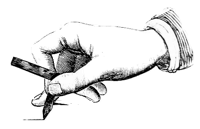La balle empoisonnée: Difference between revisions
(Created page with "From ''Les Jeux des jeunes garcons, representes par un grand nornbre d'estampes'', 4th ed. (Paris: Chez Nepveu, Libraire, ca. 1815) ------------------------------------------...") |
(Rule Sets) |
||
| Line 1: | Line 1: | ||
From ''Les Jeux des jeunes garcons, representes par un grand nornbre d'estampes'', 4th ed. (Paris: Chez Nepveu, Libraire, ca. 1815) | {{Article | ||
|Title=La balle empoisonnée | |||
|Article Category=Rule Sets | |||
|Is Featured=No | |||
|Sort Order=0 | |||
|Description=From ''Les Jeux des jeunes garcons, representes par un grand nornbre d'estampes'', 4th ed. (Paris: Chez Nepveu, Libraire, ca. 1815) | |||
|Digger=Bill Hicklin | |||
|Article Date=2016/03/05 | |||
}} | |||
Eight or ten children divide themselves into two teams. In a courtyard, or in a large square area, four corners are marked, one as the home base and the others as bases which the runners must touch in succession. Straws are drawn; the team that wins occupies the home base. The players of the other team place themselves among the other bases at suitable distances. One of their team serves the ball to one of the players at the home base. This one repels the ball, and runs to the first base, to the second, and to others if he has time. Another other player repels the ball in turn and reaches the first base while his team-mate mate reaches the second, and so on. However, two members from the batting team may not stand together on the same base at the same time. | Eight or ten children divide themselves into two teams. In a courtyard, or in a large square area, four corners are marked, one as the home base and the others as bases which the runners must touch in succession. Straws are drawn; the team that wins occupies the home base. The players of the other team place themselves among the other bases at suitable distances. One of their team serves the ball to one of the players at the home base. This one repels the ball, and runs to the first base, to the second, and to others if he has time. Another other player repels the ball in turn and reaches the first base while his team-mate mate reaches the second, and so on. However, two members from the batting team may not stand together on the same base at the same time. | ||
Latest revision as of 07:17, 6 March 2016
From Les Jeux des jeunes garcons, representes par un grand nornbre d'estampes, 4th ed. (Paris: Chez Nepveu, Libraire, ca. 1815)
Property "Version" (as page type) with input value "{{{Version}}}" contains invalid characters or is incomplete and therefore can cause unexpected results during a query or annotation process.
Comments
<comments voting="Plus" />
Eight or ten children divide themselves into two teams. In a courtyard, or in a large square area, four corners are marked, one as the home base and the others as bases which the runners must touch in succession. Straws are drawn; the team that wins occupies the home base. The players of the other team place themselves among the other bases at suitable distances. One of their team serves the ball to one of the players at the home base. This one repels the ball, and runs to the first base, to the second, and to others if he has time. Another other player repels the ball in turn and reaches the first base while his team-mate mate reaches the second, and so on. However, two members from the batting team may not stand together on the same base at the same time.
Players from the team on the field must pick up the ball as promptly as possible in order to touch or hit one of the runners before he reaches base. In that case, the player who has been hit by “the poisoned ball” suspends his running, and his team has lost the home base. His team then becomes the serving team unless, on the spot, he or one of his teammates is sufficiently skilled to pick the ball up and hit one of their adversaries before he reaches the home base. In this case the batting team may continue to bat. If a player who repels the ball does it so carelessly that one of the players from the other team catches it before it touches the ground, then his side is out and has to leave the home base.
This game is a great exercise in a large courtyard, whose four corners mark the bases. When played in a large field, stacks of clothes mark the bases, but then you have the inconvenience of having to run too far to fetch the ball, and the team at home base tends to remain batting too long.
Tr. by Xavier Glon.
Although this entry has sometimes been cited as an early description of a bat, ball and baserunning game, there is no mention of a bat and the text at least can be read as implying that the ball was "repelled" with the open hand, as may also have been the case with early English baseball.
